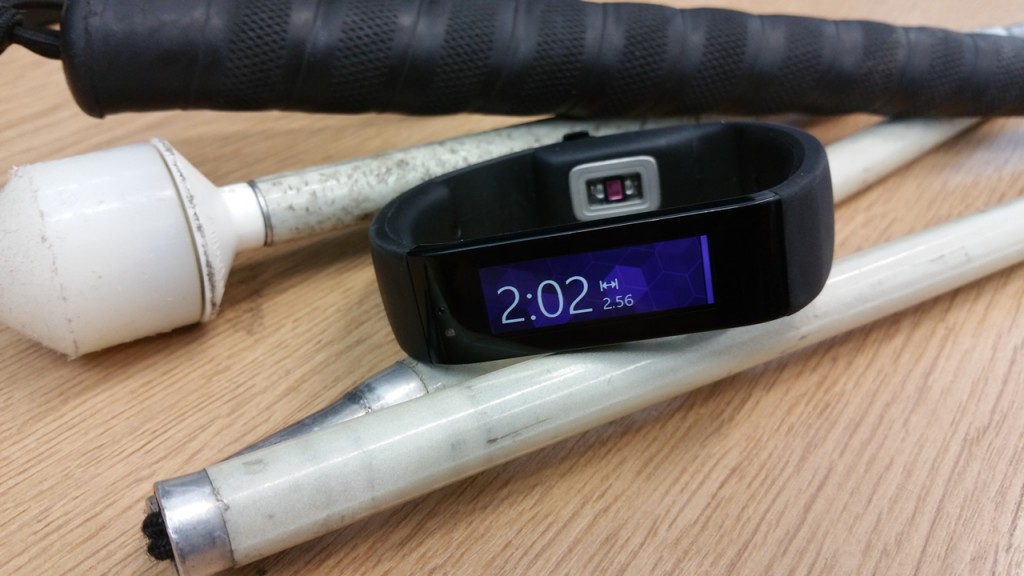Walking in Place with Wearable Technology
The following text is an extended abstract for a paper which I hope to present at this years ITAG. The paper features the continued research and development of the Virtual Cane system I originally developed as part of my PhD.
Walking in Place with Wearable Technology: the development of a system for travel training and applied travel for people with a visual impairment.
In this paper we present the application of commercial off the shelf mobile Virtual Reality and Wearable Health technologies to formulate a novel system for travel training and applied travel for people with a visual impairment (VI).
At the heart of the system is a walking distance estimation algorithm derived from the design and analysis of a custom cane-use walking classification for applied Orientation Mobility Cane Technique (OMCT). The algorithm can be used to track position through dead reckoning, with integral drift corrected for each time the operator completes a specific phase of the walk cycle. Not only does this allow for correctly performed OMCT to be used as a means of navigation within Virtual Environments for those with a VI; but also provides basis for a self-contained indoor and outdoor positioning system.
Virtual representations of unknown Physical Environments (PE) have been demonstrated to allow those with a VI the opportunity to develop both mental-models and navigational strategies in advance, which can then can then be employed in the PE. Typically, such systems are found to disrupt the match between both the mental body-model formed from proprioceptive data and the sensory data supplied by the VE. This is because the methods applied for navigation often require a mental association between peripheral input and the act of virtual translation.
In order to evaluate and ultimately combat this effect, this research investigates alternative methods of navigation based upon an amalgamation of OMCT and the Walking in Place (WIP) technique.
WIP is an established effective method to navigate VE. It enables an individual to traverse a VE without the physical limitations imposed by tracking devices; and it has been shown to improve both an individual’s level of immersion and their spatial orientation. Research is now needed on how WIP might affect these outcomes for those with a VI; and ultimately how it might affect the acquisition of spatial knowledge which can then be applied to a PE.
To demonstrate the effectiveness of the current system we show its application utilising a standard assistive white cane. Finally we discuss how the system can be improved via the design of a custom tip with odometry sensing capability.
DOI: 10.13140/RG.2.1.1252.6245
Update, the paper was accepted and here is a link to the presentation.
